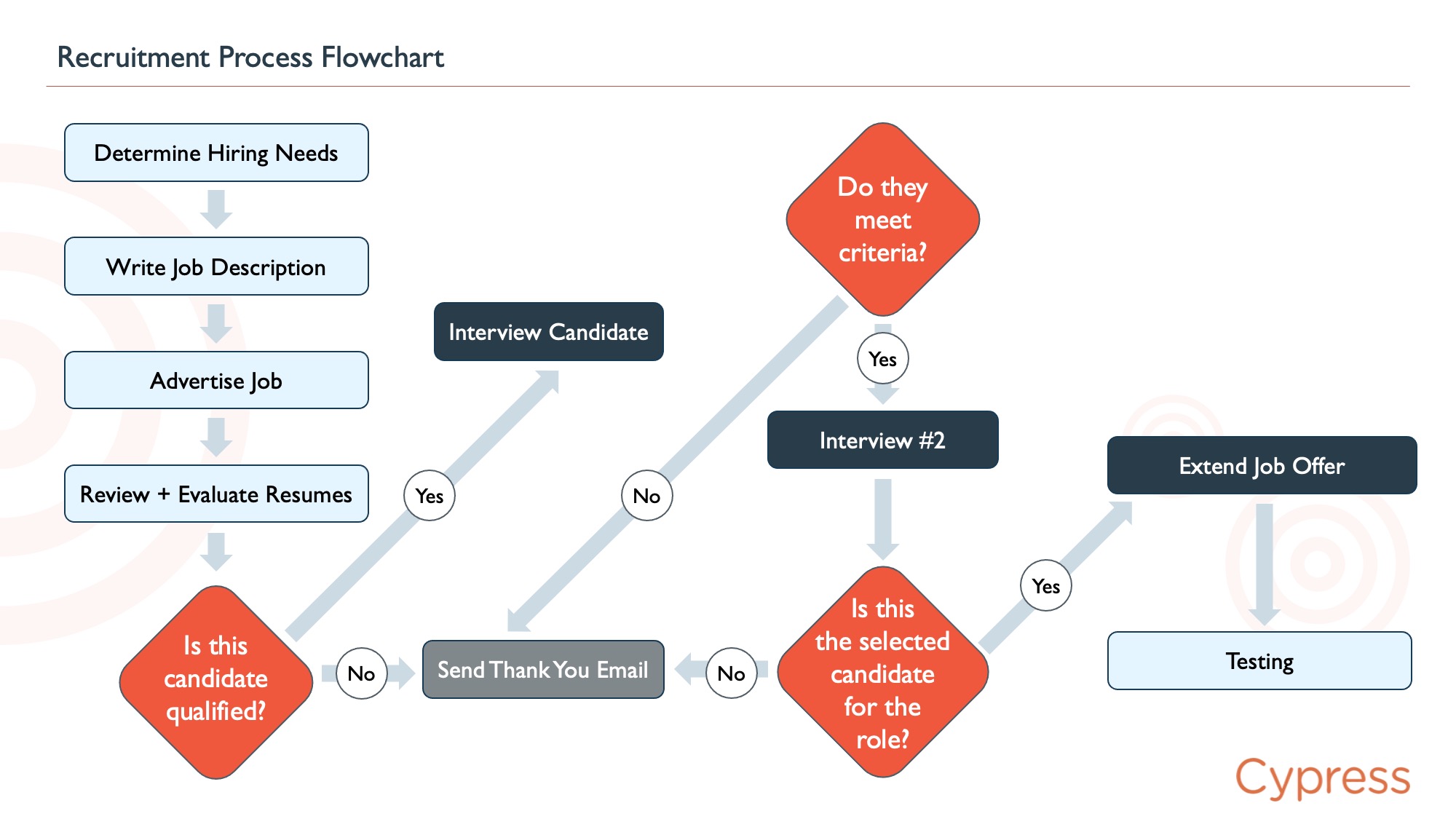The future of your business is dependent on your hiring practices.
Each hire plays a pivotal role in shaping customer satisfaction, growth, and profitability, making the stakes of recruitment high. The impact of hiring decisions reverberates through staff turnover rates and employee engagement, emphasizing the need for precision in the recruitment process to sidestep the repercussions of mismatched hires.
Despite the critical nature of recruitment, a staggering 83% of candidates report negative experiences during hiring or onboarding, highlighting a widespread issue in recruitment practices.
In an increasingly competitive recruitment landscape, you need a dedicated strategy to help you pinpoint the ideal candidates—those who align with your company’s culture and exhibit long-term potential.
Get this right and you can achieve anything. Get it wrong and you’ll face workforce disharmony and rising costs.
The Benefits of a Well-Defined Recruitment Process
A well-defined hiring process is critical for organizations that want to attract, hire, and retain top talent. This clarity not only facilitates the effective screening and evaluation of candidates but also minimizes the likelihood of unsuitable hires, ensuring the selection of the most competent individuals for each position.
Implementing a structured recruitment strategy is the first step towards business success, drawing in talent that will fortify your company culture, boost sales, and elevate your standing in the industry.
Here are some of the benefits of having a well-defined recruitment process:
- Refines and improves hiring practices. A repeatable process for attracting, interviewing, and rating candidates can help identify top candidates more quickly, reduce bias, and be adjusted over time.
- Saves time and money. A refined and uniform recruitment process identifies key components to ensure the right tools are in place for recruiters and hiring managers to use for every new hiring requirement.
- Helps to find the right talent. Having a clear process in place means you can identify what your company needs and establish what roles require targeted recruiting efforts. You can then communicate this to candidates to attract those who meet the company’s needs. This is more than just hiring a talented person; you must get someone who fits the role, has the right skill set, and whose personality fits within the team. All stages of the process are vital; each of these steps work towards whether or not this candidate will turn out to be a great asset to your team or a liability.
- Improves Retention. Having an effective selection and recruitment process means that you are more likely to pick those who perform to a high standard and remain high-performing, motivated employees. If you find that you are losing people after a short space of time, then the chances are your recruitment process is not effective and needs changing. It is important to implement defined methods to help identify people who will commit to the role; you need candidates who will not only stay in the role but also add value to the team.
Developing a Winning Recruitment Process
Hiring new employees is an intensive process. Research by The Josh Bersin Company shows the average length of the hiring process is 43 days on average. The length of the process can vary depending on the role, industry, and level of experience.
Before hiring, you must go through a recruitment cycle. A comprehensive hiring process is comprised of the following key steps:
- Step 1 // Determine your hiring needs: Getting the right candidate to fulfill your staffing needs first requires defining what those needs are. What role will they fill, and what specific skills does the position require? For any new hire, determine which qualifications are essential and which are nice to have. A candidate should fill a talent gap in your business, so it’s essential to define that gap. As you do this, look over an organizational chart of your company to determine what skills and qualifications are already present in your team and how a new hire might fit in. You might develop an ideal candidate profile for a job opening to compare potential candidates.
- Step 2 // Clearly define the position: Some employers take the easy route, posting a brief description of a job opening online to cast the widest net possible, resulting in a large number of applicants flooding in and then manually weeding out the good from the bad. Conserve your time and resources by clearly listing and explaining the job responsibilities, desired qualifications, and work experience. Additionally, include a few sentences describing the company, the work life, and culture and goals so potential applicants have a clear understanding of the position and company. Clarity early in the hiring process will narrow the field of applicants and improve candidate quality.
- Step 3 // Screen and access candidates: Screening candidates can be expensive and time-consuming, but companies can avoid delays in the recruitment process without compromising the quality of selection by choosing to screen only several candidates. Making the screening efficient by tailoring the background checks to the position also can help make this process quicker. This can allow them to use more time for the interviewing and hiring processes.
- Step 4 // Have an interview plan: The interview process is critical in the recruitment process. Before inviting candidates for an interview, hiring managers might create a checklist of the qualities they’re looking for in the candidates. It’s also important to carefully select the interviewers or panelists to interview candidates and create a post-interview evaluation strategy that can help them choose the best candidate.
- Step 5 // Make the Offer: Be prepared to make a competitive offer and clearly articulate the benefits to the candidate. Anticipate questions and potential salary negotiations.
- Step 6 // Optimize the Onboarding Process: Selecting a successful candidate isn’t the end of the recruitment process. Make the most of the onboarding process to ensure the new hire settles in and adapts to the new work environment. It’s a good idea to include training in the onboarding process and ensure companies provide new hires with all the resources they need to succeed in the role.
Leveraging a Recruitment Process Flowchart
A well-constructed flowchart helps you visualize the recruitment process, breaking it down into manageable steps for better transparency and execution.
You can modify a basic recruitment process flowchart example (like the one below) to reflect your business’s specific needs. Adapting a basic flowchart to your business’s unique requirements allows for a detailed representation of your recruiting process, specifying roles and timelines for each step. This tool can be digital or printed, serving as a valuable reference tool.
Streamline the Recruitment Process with Cypress
A structured and efficient recruitment process is indispensable for any organization aiming to attract and retain exceptional talent. Establishing a streamlined approach to recruitment not only enhances the ability to attract top-tier candidates but also helps you spot inefficiencies early, so you can fix them quickly.
By adopting a comprehensive recruitment system, businesses can significantly elevate their operational efficiency and the overall performance of their workforce.
Cypress offers an array of services and resources designed to refine and optimize your recruitment practices, ensuring a seamless integration of high-quality candidates into your team.
Meet with our team of tenured experts to learn how you can streamline your processes today.

